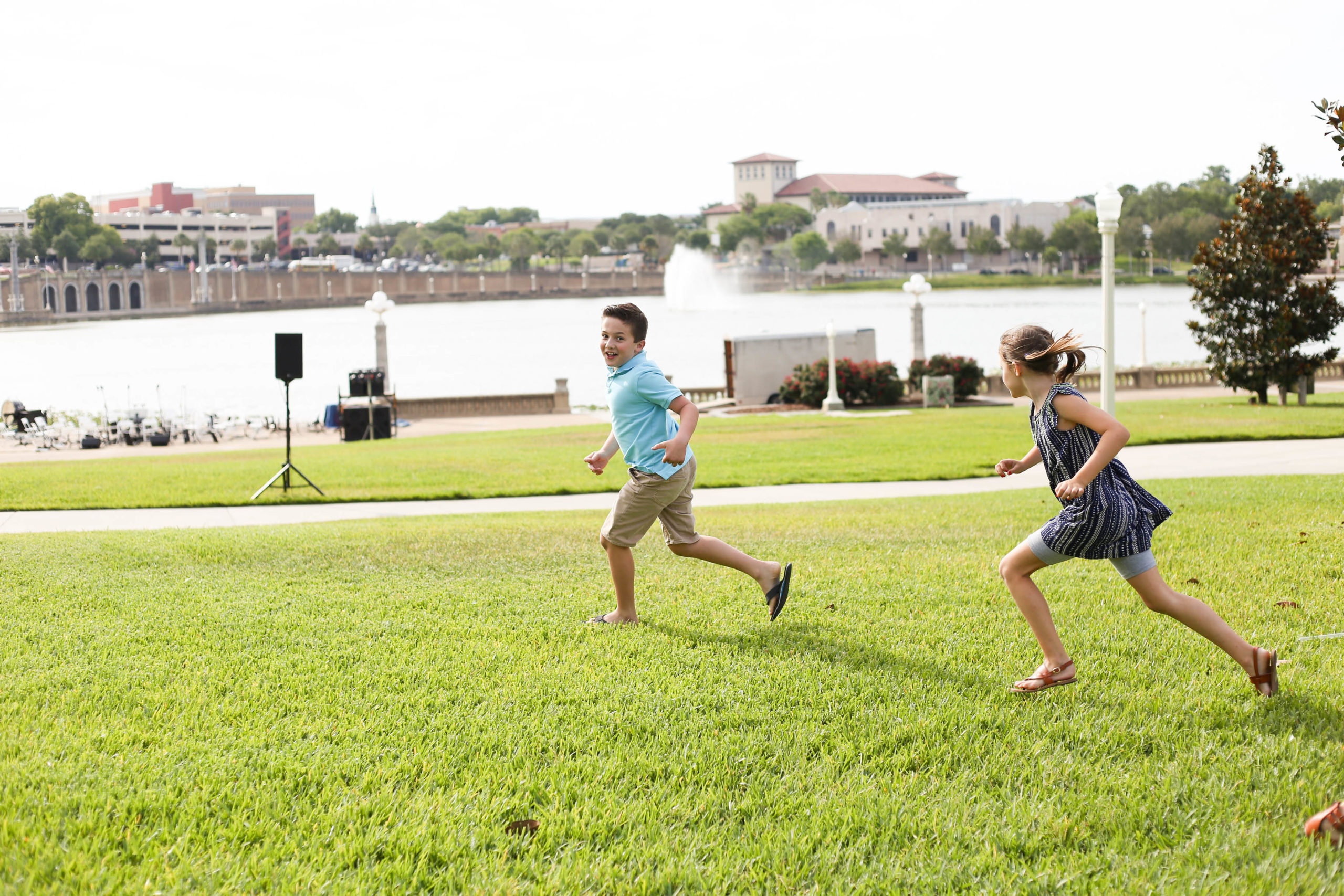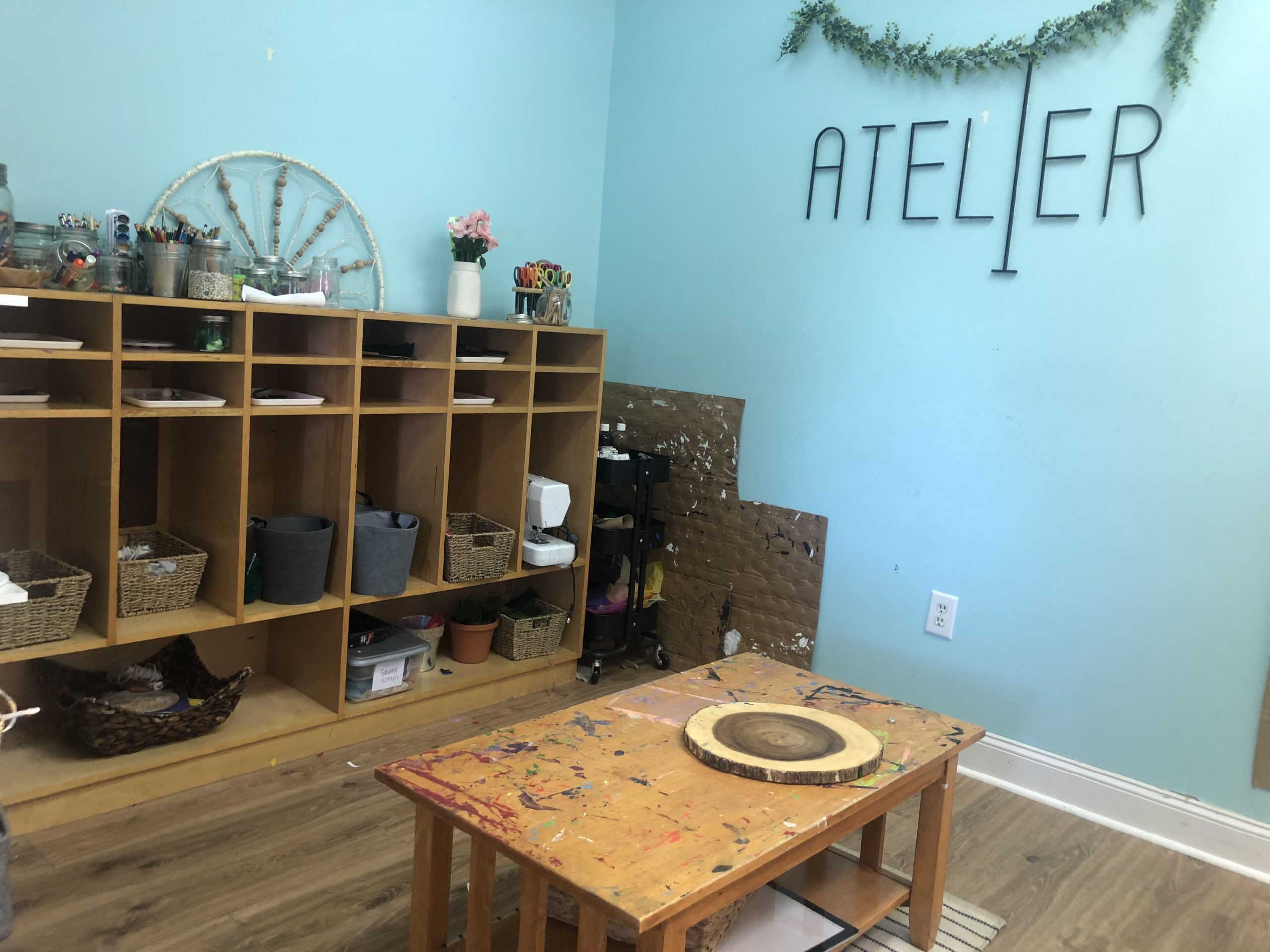Whether I’m talking about my almost two-year-old son, or the 4-14 year old students who take classes in our studio, or the children who use our curriculum, play is always on the forefront of my mind. Play is the stuff that childhood is made of. We say that if wonder is the desired result, then play is the mechanism that gets us there.
When you think of your own childhood, no doubt playtime comes to mind. But think harder for a second. You may recall family board game nights, or specific learning games you played to help strengthen a skill, but chances are that what you REALLY remember is the uninhibited hours spent out on the playground running around, creating your own games with your own rules. You probably remember tinkering away with materials that captivated your interest, or maybe you recall the time spent playing pretend. The reason that those memories stick out in particular is that those were the moments you had ownership over your play.
Play is best defined as “behavior which is freely chosen, personally directed, and intrinsically motivated.” (PlayEd 1982). I personally need to come back to this definition ALL. THE. TIME. As much as I believe wholeheartedly in a play-based, wonder-based childhood, my former control-freak self likes to rise to the surface every now and then. So, when planning activities and our schedule for the day (whether I’m in-studio working with my 4th-5th graders or at home with my little one), I keep this running checklist in my mind:
- Is there room in our day for activities that are freely chosen, or am I dictating to the child everything that needs to be done for the day?
- When the child chooses an activity, am I giving him autonomy and ownership over it by letting him direct his play, or am I hovering, over-suggesting, and micromanaging?
- Does the child have the opportunity to engage in play that motivates them to the core?
I’m not going to lie… creating the kind of atmosphere that encourages this kind of play (and keeping yourself from trying to be the center of it all) takes A LOT of intentionality, and even a bit of a mindset shift that happens over time. To get us started, I’m going to give you 5 quick tips on infusing your day with play…
Tip # 1: Make high quality materials easily accessible
Nothing inspires play like open-ended, raw materials. Toys are great, game boards are fun. I’m not saying to chuck those out. But try to set out materials that, in-and-of themselves, have no direct purpose. This will help fuel your child’s creativity and keep them engaged in play longer. Some great materials are…
- Nature-based materials like sticks, shells, stones, sands, and leaves.
- Fabric-based materials like yarn, fabric squares, sewing needles (plastic or real)
- A Light Table with glass gems, Magna-Tiles, and colored plastic cups.
- Playdough or clay
- Art materials like paint, brushes, scissors, tape, construction paper, markers, crayons, pipe cleaners
- Items you may already have around the house like paper towel or toilet paper tubes, cardboard boxes, masking tape, cotton balls, Q-Tips, plastic water bottles, etc.
The idea is to give kids access to materials that inspire play and creativity in a way that doesn’t box them in to a specific finished product, and to organize and store those materials in a place that can be easily reached. Here is a photo of our studio’s Atelier (the French word for a workshop or studio).
This is a space that’s in our playroom and accessible to all of our students. The bins and baskets are filled with most of the materials I listed above, and more! Notice how much that little table has been “loved” on. The goal isn’t always to maintain a picture perfect space, but a place where kids aren’t afraid to make messes and where they have ownership over their play and creativity!
Tip #2: Play to your child’s strengths & interests
I read a quote recently that really struck me:
If your child is poor in math but good at tennis, most people would hire a math tutor. I would rather hire a tennis coach.
I mean, wow. Our society, for the most part, is not wired this way. We freak out over math and writing and all the things our kids aren’t good at, and we take action only on those things. What if, as this quote suggests, we flip that thought on its head? What if your child spent most of their time on the things they love, the things they’re strong in, the things they actually care about? How would their life be different?
Don’t get me wrong… math is important. Writing is important. But do we want our kids to be excellent in math and excellent in writing at the expense of other things they love?
“But kids NEED to be good at math and writing and reading and spelling and all academics in order to be successful adults!”
Maybe so. But probably not. What kids really need to know is that their ideas are worthwhile, and that we are willing to invest in who they are at their core. Their childhood is around 20% of their entire life. Adulthood is about 80%. Let’s protect their childhood… they’ll have the rest of the time to figure it all out. ALSO, when we help develop kids who are confident because the adults in their life believe in them and invest in their strengths, that confidence will help them tackle anything that comes their way.
Tip #3: Put a twist on old games
Growing up, my mom, sister, and I would alway play a board game called “Parcheesi.” My mom used to play it when she was growing up in Cuba, and I hope to continue the tradition with my family! The rules are pretty basic… it’s comparable to the games “Sorry” and “Trouble” (but better, in my opinion!). My mom and sister and fiercely competitive (me, not so much), and one weekend they decided to create new rules and put a twist of sorts on the game. It somehow evolved into this crazy version of the game that’s hilarious and infuriating all at once, and if we don’t end up wanting to kill each other by the end of it, it’s actually a blast.
It takes a whole other level of creativity to add new rules to an existing game or activity. Giving a child the opportunity to do this puts them in the driver’s seat, giving them the title of “developer.” There are so many games kids can do this with:
- Board Games: take any board game in the house (one that your family is familiar with), and have each child create a new rule for the game. See what happens!
- Card Games: UNO is catching on to this “new versions of old games” as it now has a bunch of different variations. Give your child a classic UNO deck and create new rules for the game! Same goes for a standard deck of cards.
- Outdoor games: Challenge your child to design their own hopscotch that’s different from the classic layout. Or have you ever heard of Reverse Hide & Seek? That’s a fun one! Even the game of 4-Square is excellent for this because it requires 4 children to decide on and execute rules for the game.
Tip #4: Spend time outdoors
The Great Outdoors… nature’s own toy chest! There’s something about the way that nature presents its own open ended materials to play with that makes a kid just go for it. Sticks, leaves, rocks, dirt, sand, grass, trees, bushes, branches, water, snow (not for us Floridians, sadly)… it’s all just waiting there, begging to be played with.
So, make it a priority to go outdoors regularly. Allow your child to wander and wonder, closely observing their interactions with the natural world. This is a great chance to play with them, ask them questions, step into their world.
Tip #5: Set the example of play
Making play a priority starts with our own lives. Our kids will follow the example we set for them, so think about the way you infuse play into your own life through personal hobbies and interests. Is it sewing, woodworking, creating new recipes, art, music, a sport? Our kids need to see us partaking in interests that are personal, completely separate from our children and families… something that sparks our own wonder and delight! I know it’s tough to find the time for personal hobbies when we’re already juggling so much, but even doing something 2-3 times a month that rekindles that creativity and play we once had as children, can make all the difference.




